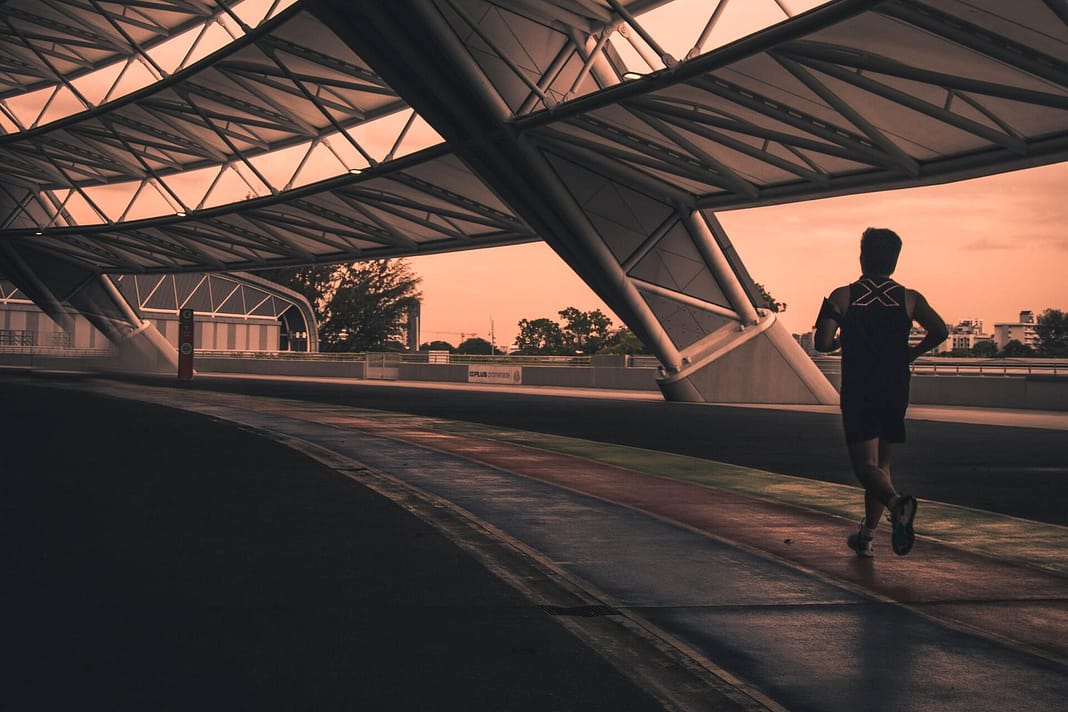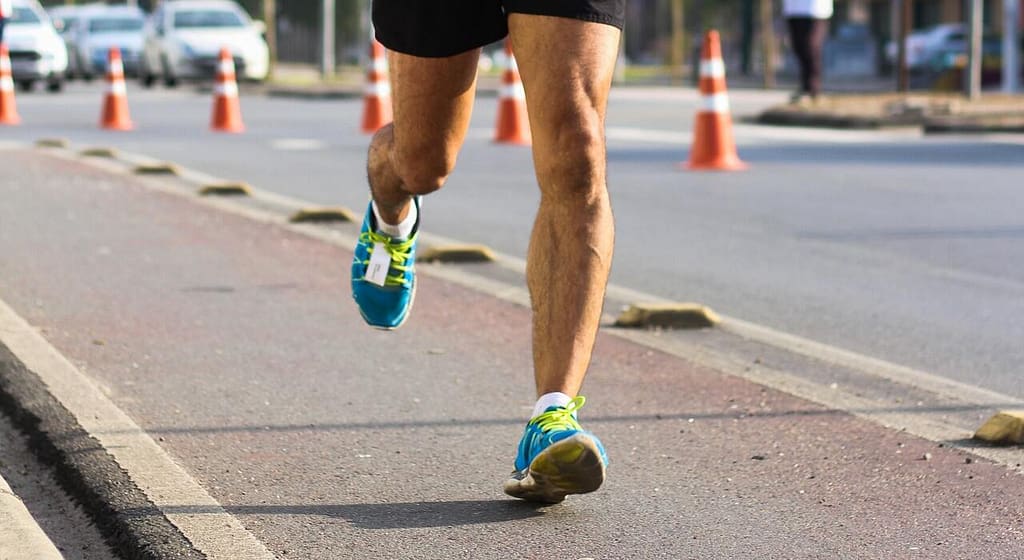
A whopping number of runners struggle to breathe while running and quit halfway through their first marathon. Using right breathing exercises and techniques could be the solution
Running is by far one of the most accessible sport, as you can practice running almost anywhere. Running is easy, and it requires nothing. Well, almost!
Today, when people are increasingly becoming health conscious and indulging in different physical activities, a substantial number of health enthusiasts have dusted their running shoes and are ready to hit the tracks.
But, running isn’t just about hitting the tracks. So, before you start running slavishly, take a pragmatic view. Running is an intense workout and one of the best aerobic exercises.
When it comes to running, endurance is the name of the game.
Enthusiastic runners often tend to overlook a critical factor when they start. It is this, how to breathe while running? There are other variables such as posture, pace, and stride also which come into play, but it is imperative to use the right breathing technique to reap all the benefits of running, as it is a key factor for healthy running and better performance. Whether you are just getting started or back from a long break, there are some simple running tips and breathing techniques for runners that can help you immensely in sustaining healthy running for a long time.
Some of you might think, breathing comes naturally to us. Who needs a lesson on breathing? We have been breathing since the day we were born, and apparently, we are doing quite all-right.
Even if you are not aiming for a podium position, and you want to run for the fun of it, or, you are just interested in keeping your belly under check, right breathing will help you gain maximum benefits out of your daily jogging sessions and make running sustainable, less straining and enjoyable over a period of time.
Contents
Why is right breathing crucial while running?
Our body needs oxygen to survive, as it plays a crucial role in fueling all our activities. When we breathe, we facilitate the intake of oxygen into our lungs, which is then pumped by the heart to various body parts for cellular respiration through the blood. So, why do you struggle to breathe when running? When a person runs or indulges in an arduous activity, the body consumes more energy and thus needs more oxygen to function optimally. We also need to remove carbon dioxide build-up from the lungs. You would have noticed yourself taking deeper breaths after a vigorous activity like running or climbing a set of stairs. That is your body responding to a sudden surge in oxygen consumption. When the level of carbon dioxide in your lungs returns to normal, your breath becomes normal. Your body responds to the intensity of your workouts.
Breathing through nose vs breathing through mouth for running
Nose breathing
The inhalation or the air intake through the nasal cavity is known as nose breathing. This form of breathing is common. We are accustomed to it by using it unconsciously in most idle conditions. We use nasal breathing for walking or even during a casual run. Nasal breathing is usually OK when you are going for short distance jogs. But, during strenuous running, nasal breathing can not accommodate an increased rate of air intake needed as it is smaller as compared to mouth. When you force more air through nostrils, it also tends to tighten the jaw muscle, which hinders the flow of air. Some people practice inhaling through the nose and use mouth to exhale to accommodate this surge.
Mouth breathing
In mouth breathing, we use our mouth as a primary source for inhaling air and make the nose as a secondary source. When you go for intense running like a sprint, it is better to breathe through the mouth. Mouth breathing is considered the best way to inhale while running, primarily because you will get more oxygen through the mouth as compared to the nose. But, correct breathing isn’t entirely determined by these choices.
Deep Belly Breathing
How you circulate air once you inhale affects your breathing as the functioning of lower airways during breathing is more complicated than the upper airways and impacts on a runner’s performance. Inner breathing can be divided into three categories.
• Clavicular breathing
• Thoracic breathing
• Diaphragmatic breathing
Clavicular breathing is the most common form of breathing among the three, which most people use as unconscious patterns. Commonly known as chest breathing, it is a shallow form of breathing that draws minimum air into your lungs using primarily intercostal muscles and does not fully expel air when you exhale.
Now, this is crucial!
Breathing mainly refreshes the air in our lungs. But, at the end of passive expiration, our lungs do not exhale the entire volume and hold back about 2.5 liters of air, which is the ‘functional residual capacity’. So, in essence, when we breathe, we inhale only about 350 ml of fresh air that mixes with the pre-existing FRC.
Here ‘Diaphragmatic breathing’ comes into play.
Diaphragmatic breathing or ‘Deep belly breathing’ engages your diaphragm and is considered to be the deeper breathing. In deep belly breathing, a muscle located horizontally between the thoracic cavity and abdominal cavity contracts, and the abdomen expands instead of the lungs. It is a comfortable form of breathing and is considered a natural way of breathing in mammals. Diaphragmatic breathing enables you to inhale more oxygen. Right breathing is crucial for long-distance running because the way you inhale will directly impact your performance.
If you get fatigued and feel shortness of breath quickly while running, you should pay attention to your breathing. Most people tend to breathe through the chest, which is the least efficient form of breathing. It is too shallow to inhale oxygen optimally and sustain running for a longer duration. In the US, nine out of ten adults are only chest breathers. There could be various reasons for it. Bad posture, clothing choices, or weakness of muscles involved in breathing could all lead to chest breathing.
Fact: Research suggests that deep belly breathing is the best form of breathing for runners. Deep belly breathing can help shallow breathers by altering their reliance from chest to their diaphragms.
But, through training, you can modify the way your body’s respiratory system responds to intense physical activities like running. You can make alterations in your habits and re-train your body to breathe with your belly. Deep belly breathing will extend the action of inhaling and exhaling further down into your stomach. As a result, your chest will remain almost static and, your stomach will expand instead as your diaphragm forces air into your lungs. Through deep belly breathing, you will inhale more oxygen into your bloodstream resulting in better respiration as well as endurance.
Breathing and foot strikes

Another factor that runners tend to ignore is the coordination of their foot and rhythm of their breath. Breathing and foot strike coordination plays a crucial role in optimizing your run.
There is no single winning formula for it, as we almost always practice some rhythmic breathing pattern while running. This syncing of breathing and footstrikes is called Locomotor-Respiratory Coupling or LRC. Most runners tend to have an even number of foot strikes for each air inhale and exhale. But, there are no hard and fast rules and, every runner will have different patterns that will work optimally for him or her. The only way to figure this pattern is through practice.
Some studies suggest that a 2:1 coupling ratio is most favored. That means for every two strides, you should take one breath.
Budd Coates, a running expert, and author of “Running on Air” proposes breathing patterns that would alternate which foot was striking during inhalation and exhalation. For example, taking three footstrikes for every inhale and two-foot strikes for every exhale.
But don’t let the idea of patterned breathing for enduring a longer run overwhelm you.
Research has also suggested that too much thinking about running and breath can lead to a decreased efficiency in running mechanics.
Tips for breathing better
Every new runner faces the same breathing issues and experiences similar struggles when they start.
It will take practice to control your breathing. With practice, you can modify your breathing patterns by altering the rhythm and the depth of your breath.
The talk test: Speak a complete sentence without gasping for air while running. If you succeed, your pace is appropriate.
You can start by focusing on slow deep breathing while going on short walks and make a conscious effort to expand your belly while breathing. You should maintain an even breathing pattern and pay attention to the strides. You will be taking multiple strides with each inhales and exhales.
Gradually, pick up the pace while you focus on maintaining the same even breathing patterns. It will warm up your lungs and give your diaphragm time to adjust to harder breathing later.
Learn a proper way to breathe and maintain a good posture while running as a slumped posture can decrease your lung capacity. You should hold your head up and run with a tall spine. Good running posture should be upright and slightly tilted forward.
You can also influence your breathing positively by conscious breathing exercises that will help you recondition your respiratory patterns.
Tips for runners with Asthma

People suffering from asthma often steer clear of any sport that requires physical exertions.
Asthmatics can not only indulge in such intense sport but also excel in it. However, some precautions must be taken beforehand.
Your doctor is the best person to guide you in this regard. He will help you develop a running routine based on your needs as there are certain precautionary measures that you need to take before you start running regularly.
There are some breathing exercises which are beneficial in enhancing breathing patterns and help you in your runs.
Some of the breathing exercises:
• The Papworth method
• Buteyko breathing
• Nasal breathing
• Deep yogic breathing
You can find more tips for running with asthma here.
Running as a health activity has many benefits. Teaming it up with the right breathing techniques will enhance your performance as well as experience. Be realistic, and do not make overtly ambitious plans when you start, as failure will bring anguish. Start small and add more miles to it gradually. If you can run 2 kilometers comfortably, run 2 kilometers for a week. Every successful run will inspire you to push further and trigger you to go running the next day. Remember, Rome, wasn’t built in a day.
Don’t follow others as every runner has a different fitness level. What works for one may not work for another person. It is always better to know your body’s limitations and then work on it gradually. Once comfortable with speed and duration, you can challenge yourself further.
Use deep belly breathing and try different foot-strikes and breathing rhythms. Experiment with different speeds and distances to figure out a pace that lets you run without a struggle.
Always run at a pace that feels natural and lets you breathe easier. It may be a personal choice but, the majority of runners believe that mouth breathing is better suited for running. You should also practice breathing exercises to improve your breathing mechanics.
Finally, consistency, dedication, and right technique is the winning formula that will yield rich dividends.
References
https://www.runnersworld.com/training/a20808056/how-to-breathe-while-running/








Interesting ,informative and detailed article , breathing right is one of the key element for long or short distance running 👍
Your article gave me a lot of inspiration, I hope you can explain your point of view in more detail, because I have some doubts, thank you.
Your article gave me a lot of inspiration, I hope you can explain your point of view in more detail, because I have some doubts, thank you.
Your article gave me a lot of inspiration, I hope you can explain your point of view in more detail, because I have some doubts, thank you. 20bet
Thank you for your sharing. I am worried that I lack creative ideas. It is your article that makes me full of hope. Thank you. But, I have a question, can you help me? https://accounts.binance.com/lv/register?ref=VDVEQ78S
Your point of view caught my eye and was very interesting. Thanks. I have a question for you. https://www.binance.com/ru-UA/register?ref=PORL8W0Z
Thanks for sharing. I read many of your blog posts, cool, your blog is very good. https://www.binance.com/sk/register?ref=S5H7X3LP
Your point of view caught my eye and was very interesting. Thanks. I have a question for you. https://www.binance.com/lv/join?ref=OMM3XK51
I don’t think the title of your article matches the content lol. Just kidding, mainly because I had some doubts after reading the article.